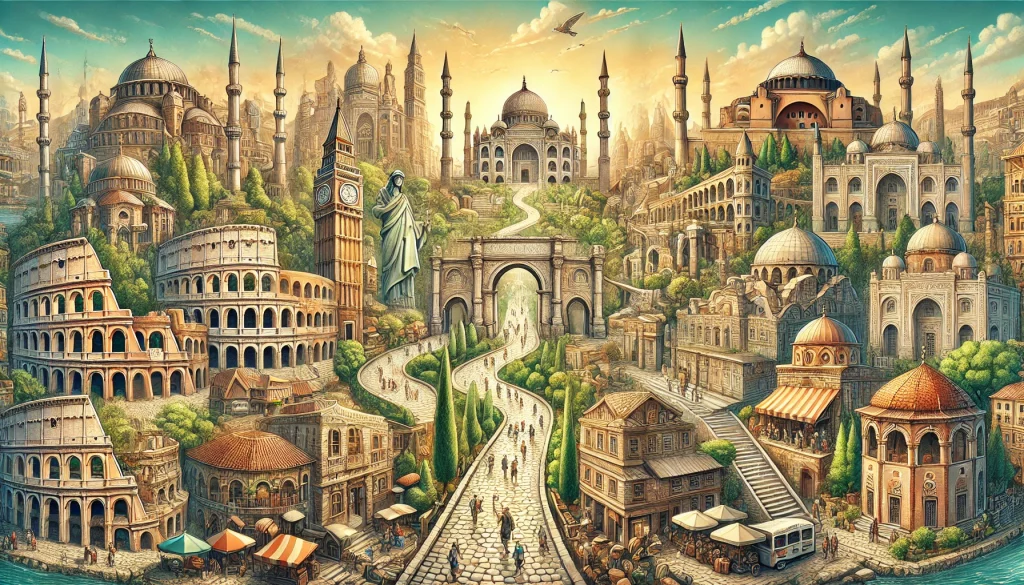The Northern Lights, or Aurora Borealis, are a breathtaking natural event. This phenomenon, involving vibrant lights dancing across the night sky, has captivated humanity for ages. To experience this spectacle, planning and choosing the right location are essential. This article delves into the science behind the Northern Lights, the best viewing spots, and tips for an optimal experience.
What Causes the Northern Lights?
The Northern Lights are the result of charged particles from the sun interacting with Earth’s atmosphere. These particles collide with gases like oxygen and nitrogen, producing vivid colors that illuminate the sky. Common colors include green, pink, and purple, though red and blue can also appear under certain conditions.
Auroras are usually seen near Earth’s magnetic poles, making high northern latitude regions ideal for viewing. They are most visible during winter, when nights are long and skies are dark.
Best Times to See the Northern Lights
To see the Aurora Borealis at its best, plan your trip between late September and early April. During this time, the polar regions have longer nights, offering more chances to catch the lights. The optimal viewing time is typically between 10 PM and 2 AM, when solar activity is highest.
Tips to Increase Your Chances:
- Monitor solar activity forecasts.
- Seek out clear skies, as clouds can block the view.
- Avoid areas with artificial light.
Top Spots to Witness the Northern Lights
1. Tromsø, Norway
Known as the “Gateway to the Arctic,” Tromsø is a favorite among Aurora seekers. Situated above the Arctic Circle, it offers excellent viewing opportunities along with activities like dog sledding and Sami cultural experiences.
Best viewing spots: Fjellheisen cable car summit, Ersfjordbotn. Bonus: The Polar Night period (mid-November to mid-January) provides 24-hour darkness, increasing your chances.
2. Abisko National Park, Sweden
Located in Swedish Lapland, Abisko is famous for its clear skies and beautiful landscapes. The “Blue Hole,” a patch of consistently clear sky, enhances visibility.
Best viewing spot: Aurora Sky Station. Bonus: Combine your Aurora hunt with winter activities like skiing or ice climbing.
3. Rovaniemi, Finland
Rovaniemi, Santa Claus’s official hometown, offers a magical setting for seeing the Northern Lights. Surrounded by vast wilderness, this town blends natural beauty with modern comforts.
Best viewing spots: Ounasvaara Fell, Arctic Snow Hotel. Bonus: Stay in a glass igloo or Aurora cabin for a luxurious, immersive experience.
4. Reykjavik, Iceland
Reykjavik has light pollution, but a short drive from the city reveals excellent Aurora viewing spots. Iceland’s dramatic scenery—volcanoes, glaciers, and waterfalls—creates a stunning backdrop.
Best viewing spots: Thingvellir National Park, Grótta Lighthouse. Bonus: Visit the Blue Lagoon and the Golden Circle during your trip.
5. Yellowknife, Canada
Dubbed the “Aurora Capital of North America,” Yellowknife is a top destination for Northern Lights enthusiasts. Its northern location, low light pollution, and clear skies make it a reliable spot.
Best viewing spots: Aurora Village, Great Slave Lake. Bonus: Enjoy heated teepees and Indigenous storytelling sessions.
6. Fairbanks, Alaska, USA
Fairbanks is located under the “Auroral Oval,” an area with high Aurora activity, making it a prime spot for viewing the Northern Lights. This makes it among the top places in the U.S. to witness the Northern Lights.
Best viewing spots: Chena Hot Springs, Murphy Dome.
Bonus: Enjoy soaking in the hot springs while the Aurora dances above.
Ilulissat, Greenland
Greenland boasts some of the most pristine locations for viewing the Aurora. Ilulissat, near ice fjords and Arctic scenery, offers a unique and memorable experience.
Best viewing spots: Sermermiut Valley, Disko Bay.
Bonus: Pair your Aurora hunt with dog sledding or visiting the Ilulissat Icefjord.
Scottish Highlands, Scotland
The Scottish Highlands, though not as far north as other locations, occasionally see impressive Aurora displays. The dark skies and rugged terrain make it perfect for photography.
Best viewing spots: Cairngorms National Park, Isle of Skye.
Bonus: The Highlands also provide the chance to explore ancient castles and peaceful lochs.
Tips for a Successful Aurora Hunt
- Plan Ahead: Use apps or websites like SpaceWeatherLive or AuroraWatch UK to check forecasts.
- Dress Warmly: High-latitude areas can be very cold, so layer up and bring thermal clothing.
- Be Patient: The Northern Lights are unpredictable. Stay outside for long periods and stay hopeful.
- Find Dark Spots: Move away from city lights to minimize light pollution.
- Bring a Camera: Use a tripod and long-exposure settings to capture the lights.
Cultural Significance of the Northern Lights
The Aurora Borealis has fascinated people across different cultures:
- Norse Mythology: The lights were thought to be the reflection of Valkyries’ armor guiding warriors to Valhalla.
- Indigenous Beliefs: Some Inuit groups believed the lights were spirits playing in the sky.
- Modern Inspiration: The Aurora continues to inspire artists, writers, and photographers around the world.
Conclusion
Chasing the Northern Lights is a must-do adventure that connects you to the natural world’s beauty and mystery. Whether you’re viewing the lights from a glass igloo in Finland or a remote ice fjord in Greenland, the experience will be enchanting. With careful planning and some luck, witnessing the Aurora Borealis can be one of life’s most magical moments.



